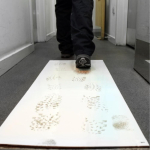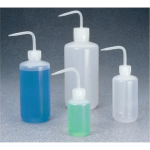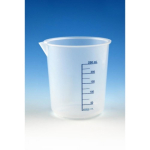Application
Selective cleavage of terminal phosphate groups from oligonucleotides and in protein nucleotide exchange and deliverance. It has also been used to phosphorylate samples to distinguish between phosphate moieties present as phosphorylated glycans and phosphorylated amino acid residues.
General description
Orthophosphoric-monoester phosphohydrolase (alkaline optimum)Alkaline phosphatase catalyzes the removal of phosphate group from various compounds that are phosphorylated. It hydrolyzes 5?-monophosphate groups from both DNA and RNA. It can also hydrolyze 5?-diphosphate and 5?-triphosphate groups from RNA.
Other Notes
For life science research only. Not for use in diagnostic procedures.
Physical form
Suspension in 3.2 M ammonium sulfate solution, 1 mM MgCl2, 0.1 mM ZnCl2, pH approximately 7
Preparation Note
•Activator: Divalent metal ions (Mg2+, Co2+, Mn2+)•Amino alcohols (2-amino-2-methyl-1-propanol, diethanolamine)Note that high concentrations of amino alcohols can as well act as competitive inhibitors (e.g., monoethanolamine in diethanolamine).Storage conditions (working solution): The suspension is offered at a c= approx. 5 mg/ml.If this suspension is diluted only 5 to 10-fold with further 3.2 M ammonium sulfate solution, 1 mM MgCl2, 0.1 mM ZnCl2, pH approx. 7, we would expect from general experience that a stability for some weeks might be given provided it is stored at 4 °C (no guarantee!).
Quality
Contaminants: ﹤0.0004% PDE, ﹤0.004% ADA and A-5-MP deaminase, each
Sequence
AP is a dimer of identical or nearly identical subunits; each of which contains 2 molecules of Zn2+ , one tightly bound and necessary for structural stability, the other loosely bound and required for caytalytic activity. The active site contains a reactive serine.In some mammals (e.g., humans), there are at least 3 distinguishable isoenzymes: the intestinal, the placental and the form found in bone/liver/kidney.
Specificity
Heat inactivation: AP activity is destroyed irreversibly by incubating the enzyme at 65 °C.Denaturation is dependent on protein concentration - using less than 10 U/ml (0.1 mol/l glycine buffer, pH 10.5, 1 mmol/l MgCl2 and 0.1 mmol/l ZnCl2), AP is inactivated by a 10 minutes incubation at 65 °C.
Unit Definition
Unit Conversion: 1 Roche unit (tested at +25 °C) corresponds to ~2 to 2.5 Sigma units (tested at +37 °C).AP activity is not expressed in Armstrong units; a conversion factor for international units is not known.Approx. 3.8 U (grade I AP) or 4.0 U (grade II AP) [+37 °C, 4-NPP as substrate, diethanolamine as buffer, pH 9.8] = 1 U [+25 °C, 4-NPP as substrate, glycine as buffer, pH 10.5].Biochemica Information. 87 (grade I AP) :1.0 U [+37 °C, QC assay conditions] = 0.79 U [+30 °C, QC assay conditions] = 0.57 U [+25 °C, QC assay conditions]








